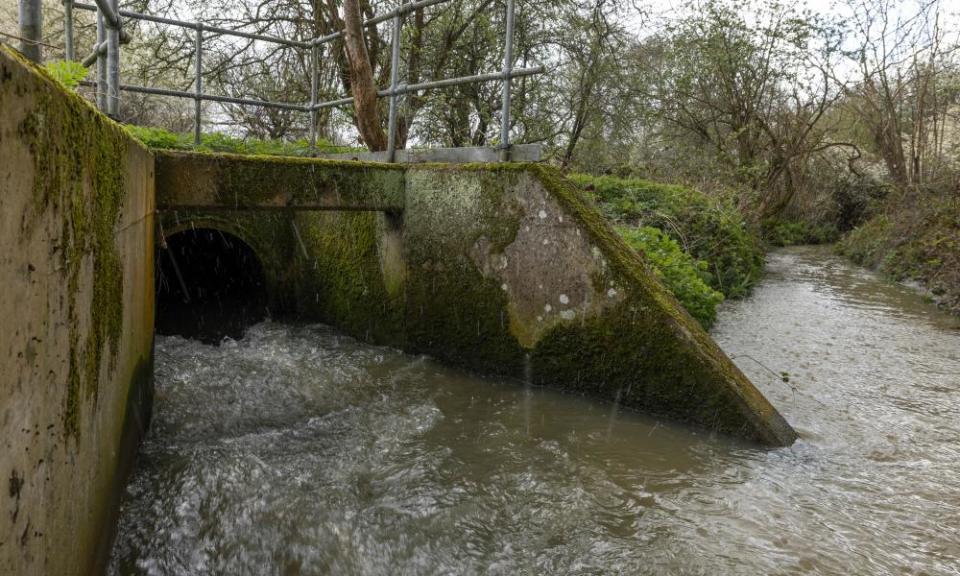Thames Water pumped at least 72bn litres of sewage into Thames since 2020

Thames Water has pumped at least 72bn litres of sewage into the River Thames since 2020 – roughly equal to 29,000 Olympic swimming pools – new figures reveal.
Water firms have no legal obligation to report the amount of sewage discharged, only the number of hours that it was released. But campaigners argue this data is insufficient as this does not properly quantify how much sewage is in England’s rivers.
The data was revealed by an environmental information request submitted by the Liberal Democrats, who are calling for water companies to be more transparent with their data on sewage spills.
In most areas there are not volume measuring devices, but Thames Water use sewage monitors to measure volume in some locations. The water company used them while making the Thames Tideway, and they are the only known monitors of the kind fitted in the country. Because they do not cover the entire network, it is likely far more sewage was released than that measured.
Related: Treated and untreated sewage greatest threat to river biodiversity, says study
Last year, at least 14.3bn litres of sewage was discharged into the Thames, and the worst year was 2021 when at least 32bn litres was released.
Mogden near Twickenham was the worst affected site, where 17.1bn litres of sewage was discharged into the river. The area contains a nature reserve, rare wildlife and areas where people swim and boat. This was closely followed by Crossness in east London, where 15.8bn litres of sewage was spilled.
Munira Wilson, Liberal Democrat MP for Twickenham, has said Thames Water should be disbanded and replaced by a “public good company”, with a board populated by environmentalists, and that would not be allowed to prioritise profit over the environment.
She said: “These horrifying revelations are proof that Thames Water needs to be ripped up. It is outrageous that Conservative ministers continue to sit on their hands and let Thames Water get away with this. The government is standing idly by whilst our rivers are poisoned and water firm execs pocket millions. The era of water firms putting profit before the environment must come to an end. These water firms are committing environmental crimes which are destroying our rivers and wildlife habitats, all whilst pocketing eye-watering sums of money.”
Prosecutions of Thames Water by the Environment Agency for pollution incidents have led to fines of £35.7m between 2017 and 2023. Earlier this year, Thames Water was fined £3.3m after it killed more than 1,400 fish by discharging millions of litres of untreated sewage into rivers. The company admitted four charges in an Environment Agency prosecution.
Related: England’s top beaches faced 8,500 hours of sewage dumping last year, study says
Wilson added that water firms should be monitoring the volume of sewage, not just the length of time over which it was discharged. “What is most shocking is that this is just the tip of the iceberg,” she said.
“With almost every sewage monitor unable to measure the litres of sewage discharged, this figure is likely to enter the trillions. Water firms are fitting monitors which simply aren’t up to the job and hide the true horrors of their filthy sewage habits.
“The government should force Thames Water to install new monitors which measure the volume of sewage discharged, so we can find the areas which need saving the most from this awful act.”
A Thames Water spokesperson said: “Our EDM [event duration monitoring] monitoring equipment cannot measure volumes and was not designed to do so. With respect to the duration of sewage discharge, ‘near real-time data’ is published for each of our 468 permitted discharge locations. This data gives the number and duration of discharges via our dedicated website. At a limited number of sites relating to the Tideway Tunnel, we have the ability to calculate volume discharged; however, we do not do this on a regular basis across our sites. Of course, what matters most is stopping the need for the discharges and we have published plans to upgrade over 250 of our sewage treatment works and sewers.”

 Yahoo Finance
Yahoo Finance 